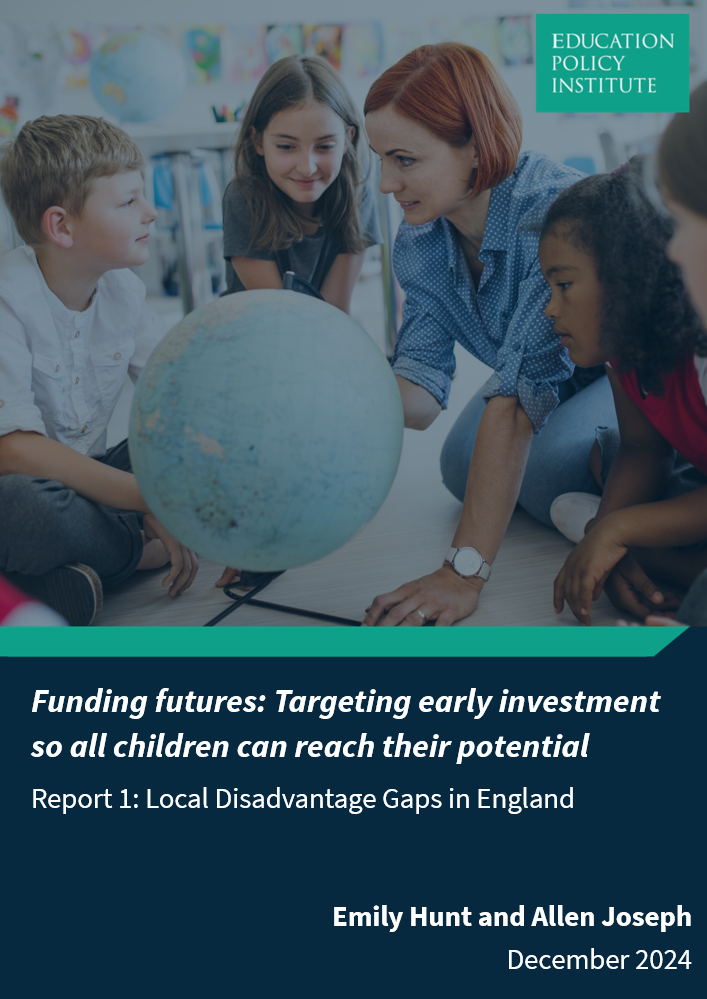A new report by the Education Policy Institute (EPI) highlights significant variation in the attainment gap between disadvantaged children and their peers across England. The report identifies local authorities with consistently small or large disadvantage gaps, and evaluates progress in closing the disadvantage gap as pupils progress through primary and secondary school.
We find that:
- London has the smallest disadvantage gaps across all phases from early years to post-16. Disadvantaged children in London outperform those elsewhere, with boroughs like Newham, Redbridge, and Hackney consistently achieving the smallest gaps across phases. Five London boroughs have the smallest gaps at age 5 in recent years, while ten London boroughs, plus Wokingham, consistently have small gaps in 16-19 education [1]
- While the disadvantage gap widens as pupils get older, there are some areas in London which are managing to close the gap by age 11. Camden, Kensington and Chelsea, and Tower Hamlets all managed to reduce the gap between age 5 and the end of primary school for their 2023 cohorts, while Redbridge is the only local authority where the gap between disadvantaged pupils and their peers had reduced by the end of secondary school
- By evaluating gap trajectories as pupils progress through education, areas outside of London also emerge as attaining well across their disadvantaged cohorts in 2023, such as Birmingham, Luton and Slough
- ‘Catch-up’ for disadvantaged pupils appears increasingly difficult as they move through the education system. Some local authorities like Wolverhampton, Bolton, Wigan and Trafford have above-average gaps at age 5 but achieve below-average gaps by age 11, demonstrating the potential for disadvantaged pupils to catch up. However, far fewer areas successfully support disadvantaged pupils to catch-up during secondary school compared to the primary phase, emphasising the importance of early intervention before disadvantaged pupils fall behind their peers
-
Recommendations:
- The government should prioritise early intervention to prevent large gaps from emerging during the early years and primary education.
- However, there are still areas where the gap in the early years and primary phases is relatively narrow but then widens amongst older pupils, highlighting that early intervention isn’t enough. The government must combine it with continued interventions throughout secondary school and beyond to prevent further widening of the disadvantage gap.
- Further research is needed to understand the specific drivers of disadvantage gaps at different points in the education lifecycle and why some areas manage to catch-up, to help support more local areas to break the link between a child’s background and their future success.
Alongside the report, EPI has made available the metrics used in this analysis available here.
You can download and read the whole report here.

This report is kindly funded by Collective Futures, Ethos Foundation and The Henry Smith Charity,
Collective Futures is a new grant-making foundation that will work to improve lives and build stronger communities through long-term partnerships with others. We focus our efforts in areas that have outsized potential to improve lives but are relatively under-resourced or overlooked, and we prioritise prevention over intervention. Our first focus area is early childhood development in the UK.
Ethos Foundation is a family foundation whose vision is for a society that enables every child to thrive, regardless of circumstance. Our mission is to create better outcomes for children’s early years, by helping to build more effective child poverty prevention systems.
The Henry Smith Charity is a major UK grant-making foundation, focused on elevating the impact of organisations committed to social change. We back bold organisations and their leaders dedicated to making social change now, helping them transform more lives, leaving a lasting legacy their community and beyond. We believe everyone deserves to thrive, but not everyone gets the same opportunities. That’s why we focus on supporting activity at the critical transition points in people’s lives, including becoming a parent and early childhood development.
Notes
[1] This is based on being in the top 15 local authorities nationally in each of the years 2019, 2022 and 2023 for those local authorities in England which exist in all three years

